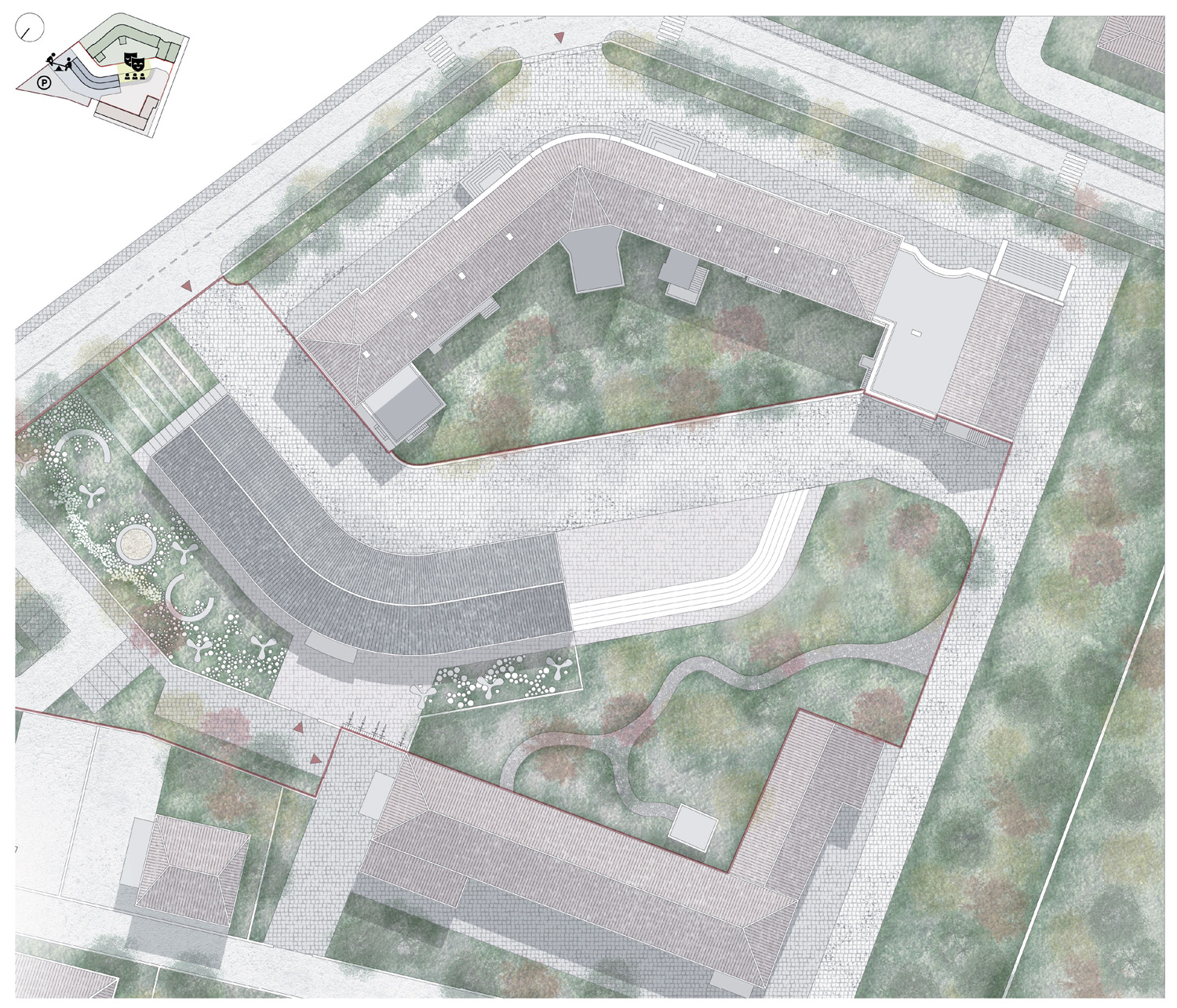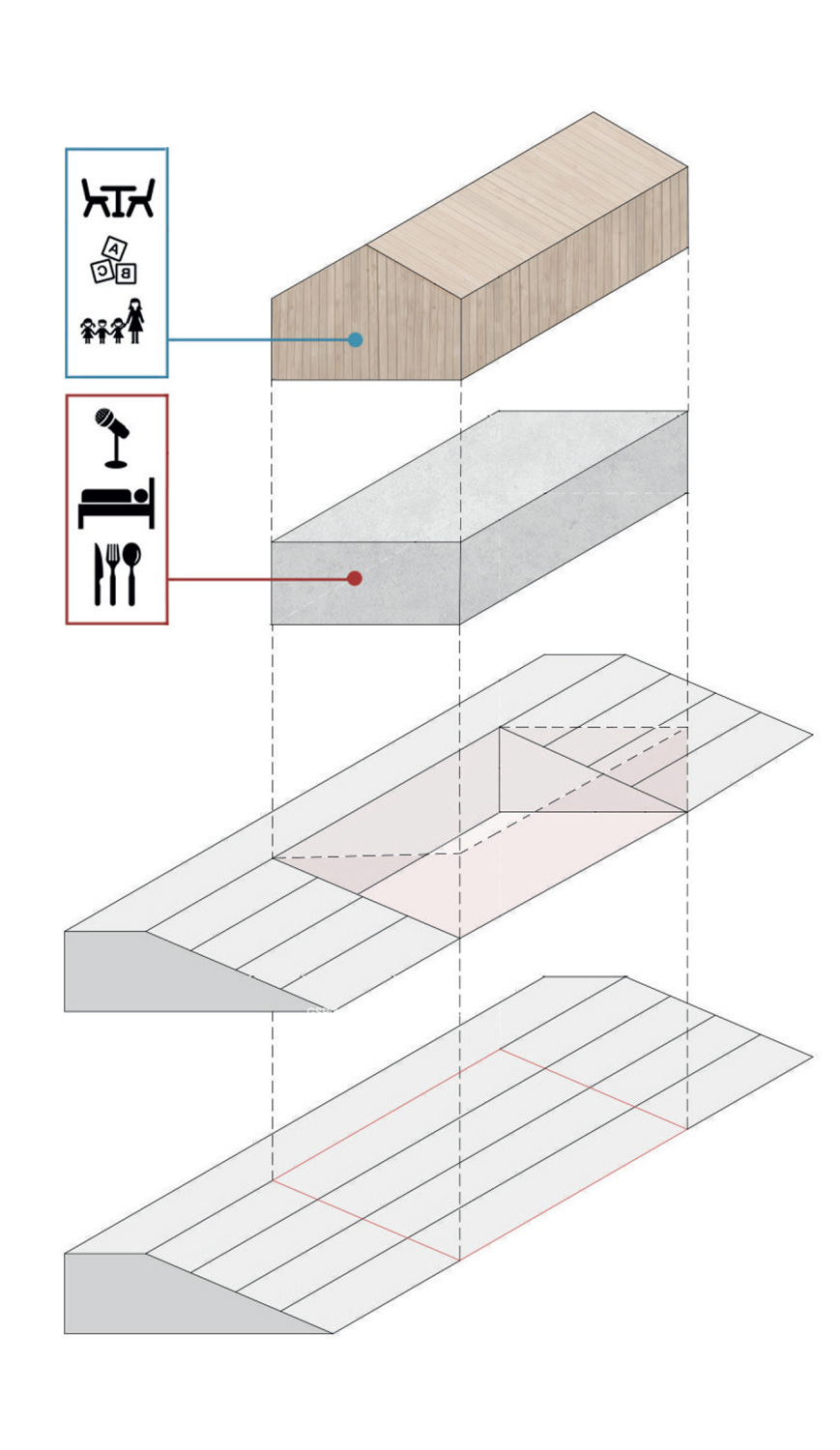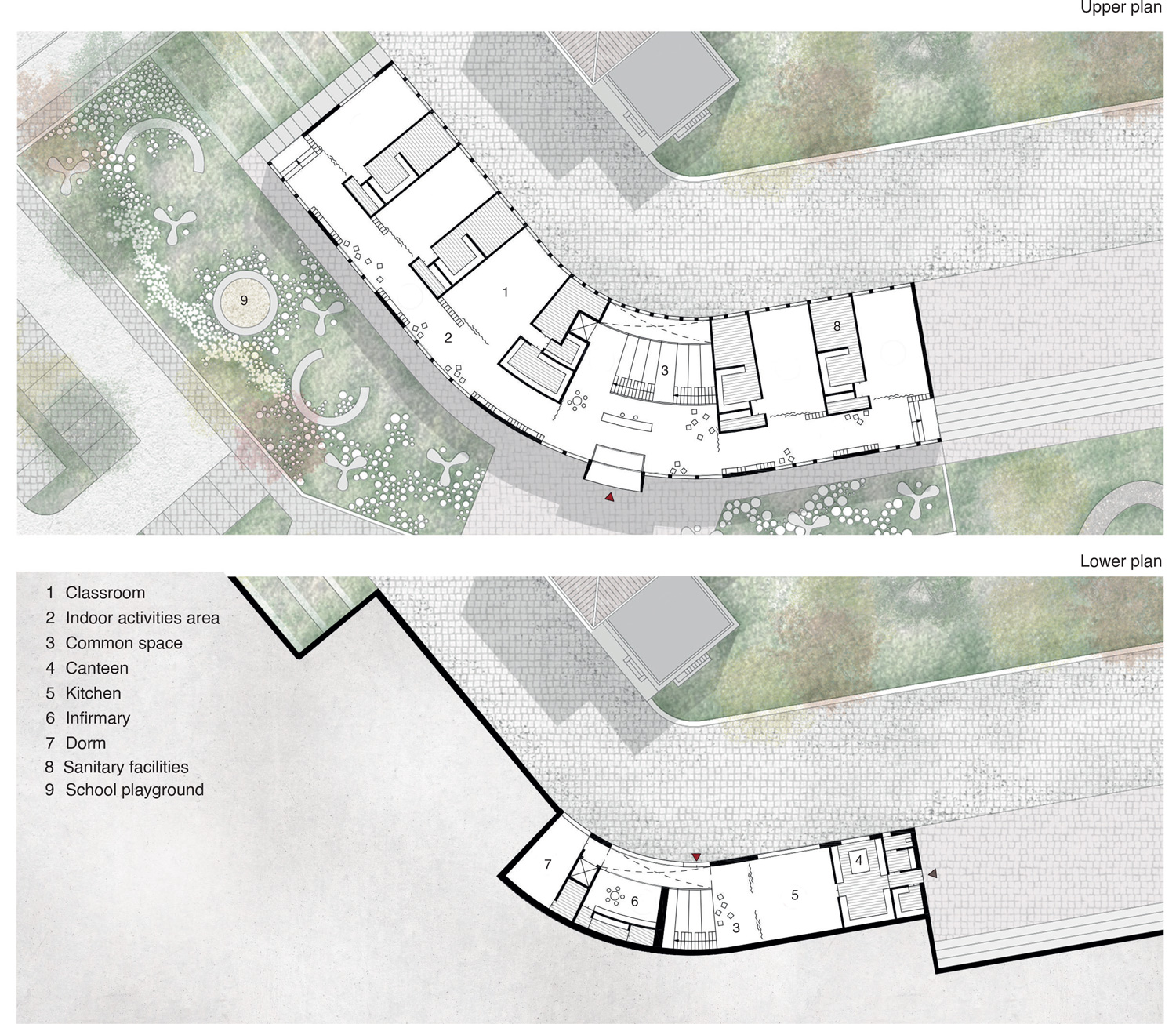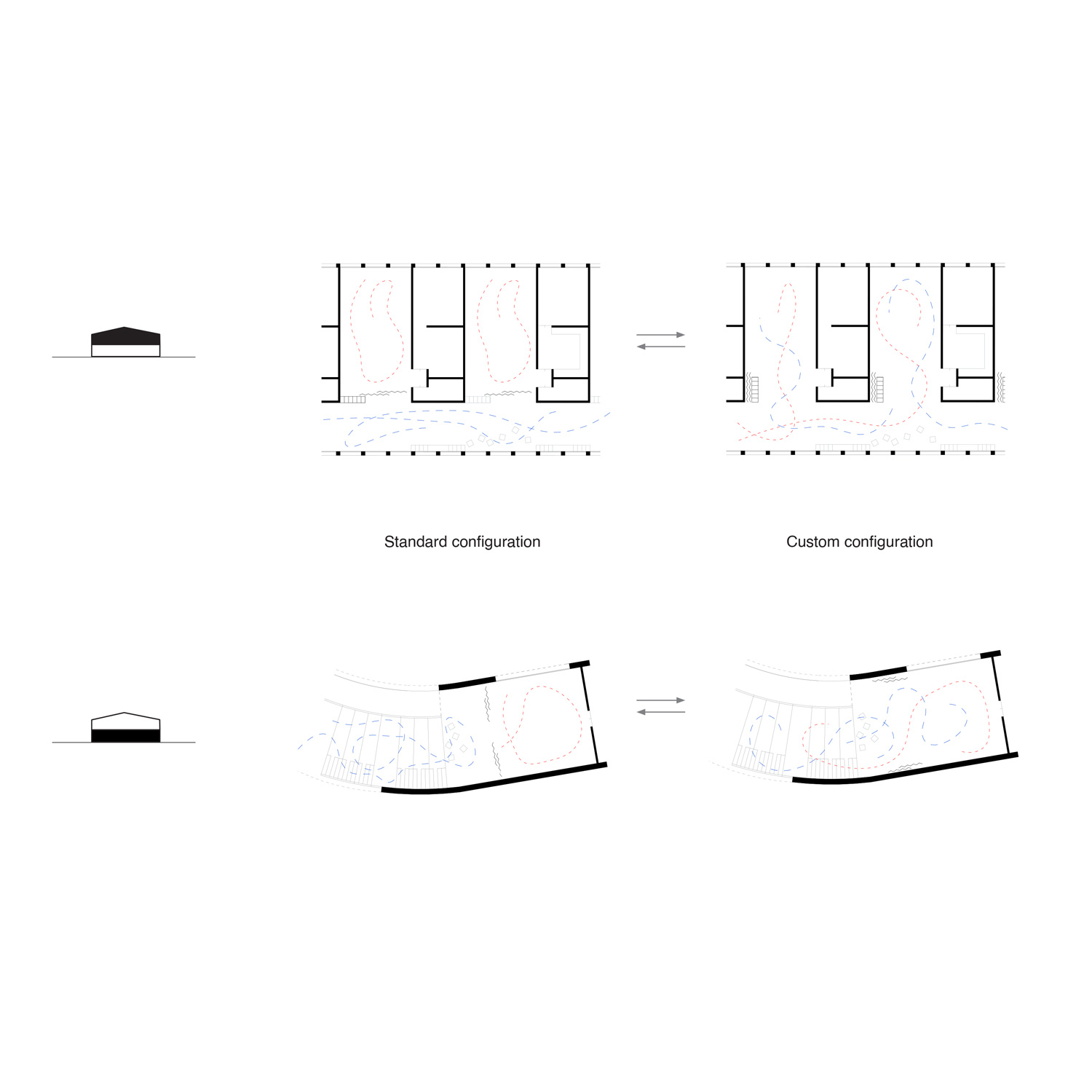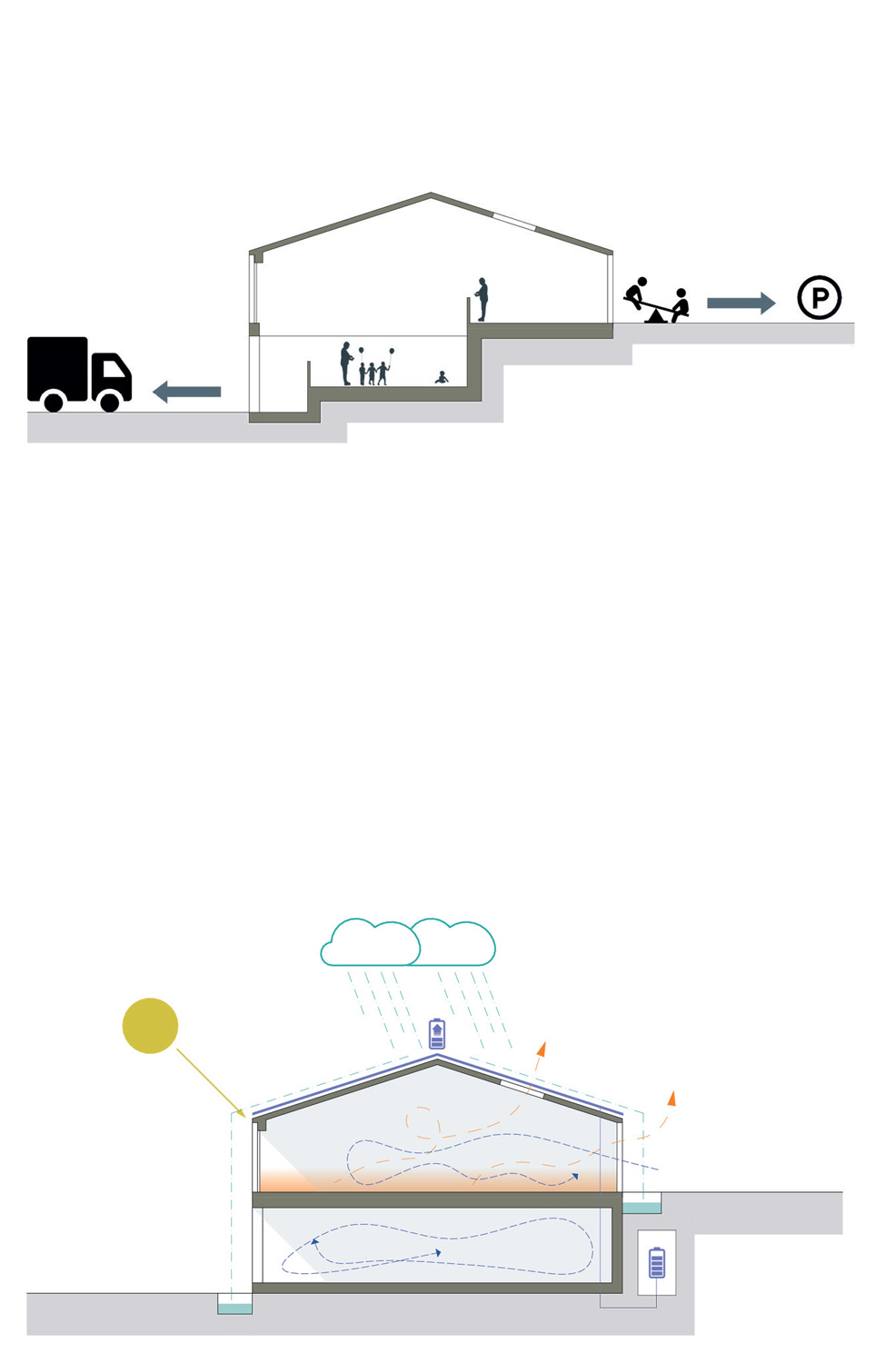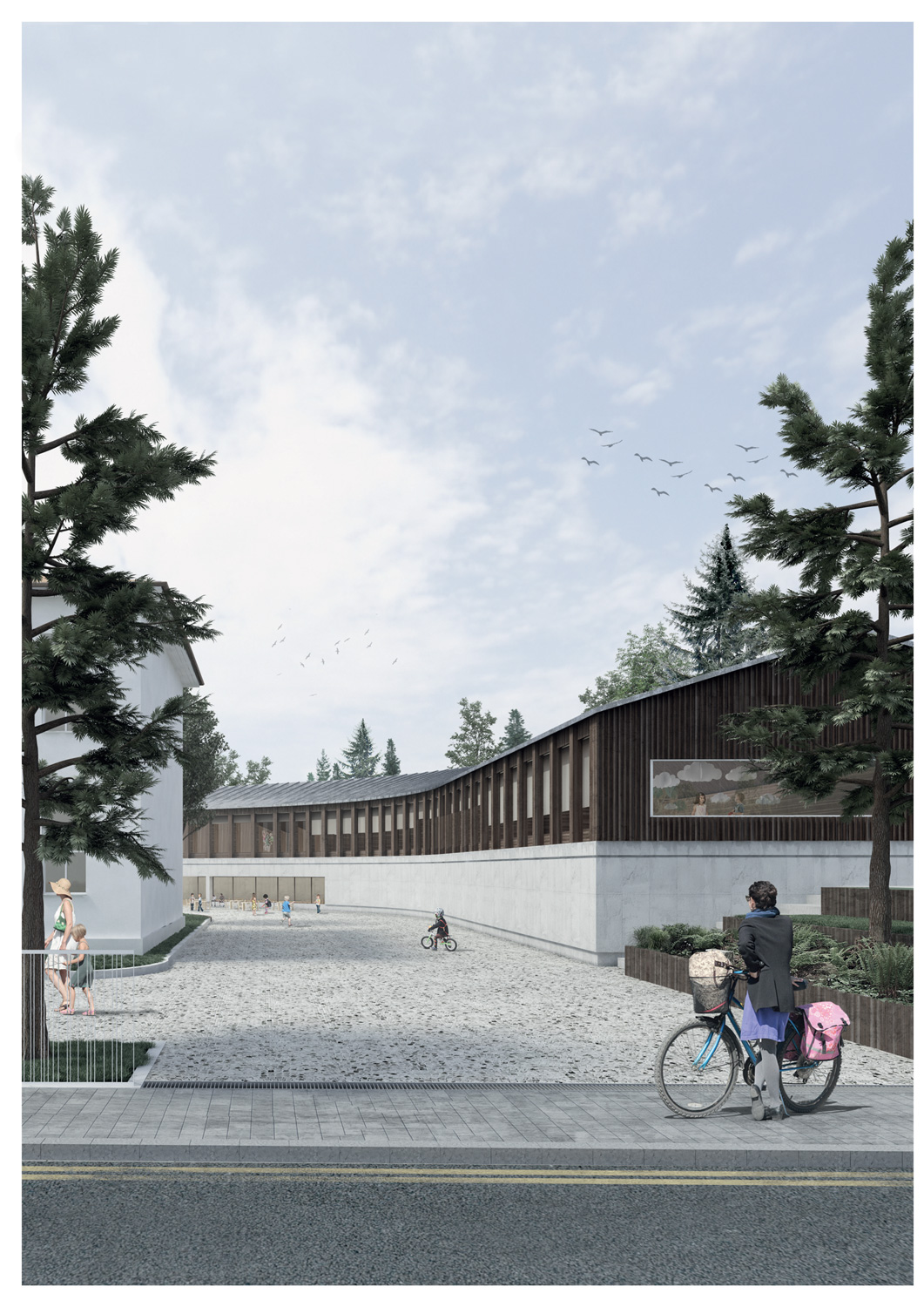2374-RON-IT-2018
Client: Modigliana Municipality
Status: Competition (2017)
Location: Modigliana, Italy
Coordinates: 44.161163, 11.793528
Climate: Mediterranean, Temperate
Materials: Concrete, Wood
Environment: Urban
Visualizer: Studio
Budget: 1.224.800 €
Scale: 3.740 ㎡ Medium
Ratio: 327,49 €/㎡
Types: Education, Nursery
The competition area is located in Modigliana, a small town in the Emilia-Romagna region in Italy. The town is settled in a hilly place that strongly influences the urban organisation of its buildings. The project area itself obeys to this characteristic, and the new kindergarten has to find a proper place and relation between the two exiting school inside the plot. The ground morphology cuts the site in two sides: the primary school stands on the lower side, whereas the middle school on the upper one.
Concept
The project proposal aims to meet the needs outlined in the competition rules: to find out a functional location of the new kindergarten, which could trigger a synergic relation with the existing buildings, to create a safe environment for the children and to locate the main entrance towards the new school parking area.
In order to achieve a strong architectural configuration, the project building slightly folds according to the lines of the site existing topography. Its shape follows the plot guidelines as well as the buildings’ ones to create a tangible connection with the surroundings and avoid the perception of an unrelated element. Concerning the functional aspect, the building is divided in two parts: the upper one, that hosts the classrooms, indoor activities areas inside and the school garden outside, and the lower one, in which the common functions (the dorm, canteen, etc.,) are located. The two floors are connected by the common area, which is a continuous space organised around a large stair. This one is designed in order to be much more than an ordinary vertical connection: its proportions and collocation are meant to create a special place for the children, who can use it both as an additional playground or as a bench in case of a theatre show.
Flexibility and mixed use
Despite its regular shape, the functional distribution is organised to be as much customizable as the teachers want: each classroom can be joined to the indoor activities area, creating up to one continuous environment from one side of the building to the other. The same result can be achieved in the lower floor: by sliding and rotating the partitions between the canteen and the common area, a new larger environment is ready to host some children show.
Sustainability and relations
Since all the common functions are gathered together in the lower floor, they can be used also for extracurricular activities. They can also be used by the students or teachers of the other schools, if needed. This possibility increases consistently the relation among the three community (kindergarten, primary school, middle school) by sharing together the common spaces. It avoids therefore the creation of a new element closed into itself. Moreover, canteen and kitchen are located next to the primary school’s kitchen, in order to receive the lunch food as faster as possible. Their location next to the car path also eases the load/unload process of goods for the school, without any interference with the children activities. The energetic aspect of the building is achieved by optimising the building shape for water collection as well as the façade design for light and temperature comfort, therefore decreasing strongly the energy consumption of the building.
